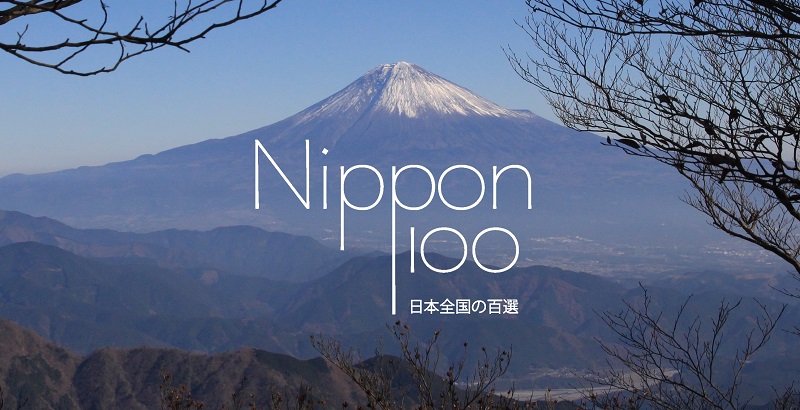Less than 100 kilometers away from busy Tokyo, Hakone is a popular onsen resort neighboring Mount Fuji, and one of the Heisei 100 landscapes. Located in the Fuji-Hakone-Izu National Park, its main sight is the view over Lake Ashi, with the water tori of Hakone shrine, a pirate ship and the iconic mountain in the background. And to this, one might want to add the active volcano Owakudani and some sections of the Tokaido. The most convenient to explore everything being the Odakyu Hakone Free Pass.
The tour around Lake Ashi is a pleasant one and, in many ways, reminded us of the Alpine road between Nagano and Toyama prefecture. Just like the mountainous way, the tour around the lake allows to use many transportation means, including a train, a cable-car, a rope-way, a pirate ship and buses.
Hakone is really popular among people living in Tokyo, and is even close enough to be considered as a day trip. But we definitely recommend to stay there overnight to enjoy a nice onsen, and take more time in the many – often busy ! – spots.
The classical way around lake Ashi is as follow:
- The train from Hakone-Yumoto to Gora, 35 minutes.
- The cable-car from Gora to Sounzan, 10 minutes.
- Two successive rope-ways from Sounzan to Togendai, 30 minutes. With a change at Owakudani that allows to explore the volcanic area.
- The pirate ship from Tokendai, on the Northern shore of Lake Ashi, to Hakone-machi or Moto-Hakone, both on the Southern one. Hakone shrine is a short walk from the last one.
- The bus to get back to Gora, Hakone-Yumoto or Odawara.
We were not sure what to expect before finally reaching Hakone, as the destinations are often really different between what we are imagining and what really happens on site. As for Hakone, it was a pleasant trip in a luxurious nature, with an unexpected volcanic area and views over Mount Fuji.
But there are two points to keep in mind: the iconic mountain is not often visible, as the weather is cloudy most of the time (that’s better around early morning and during winter); and the thermal resort becomes really crowded on weekends and public holidays. Better go there on a week day.


 |
 |


Owakudani volcano
It is not the main sight of the areas according to the numerous brochures. But it was truly our biggest surprise around Hakone. Owakudani volcano and its impressive geothermal activity are an interesting sight. And for what we know, it is the closest of that kind from Tokyo, allowing to witness the powerful energy of an active volcano. Last eruption was in 2015 and, when we visited, the trails to explore the area were closed due to toxic gases.
The area is really famous for its black eggs, cooked with the natural heating from the volcano. The shell becomes black because of the sulfur. And the eggs are really yummy.


 |
 |




Cruise on Lake Ashi
That part is the famous one of Hakone area, with three modern pirate ships sailing all day long on the lake. An unexpected Japanese view praised by families, which allows to take even more unexpected pictures of Mount Fuji with the touristic boats.
Here is our advice for the cruise part: don’t be afraid to pay a little more for the first class, far less crowded than the basic spaces of the boat. The upgrade costs 500 yen (or 400 yen for travelers using the Hakone Free Pass).




 |
 |

On Lake Ashi Southern shore
Unlike Tokendai on the North, the Southern port of Lake Ashi – Hakone-machi and Moto-Hakone – are filled with touristic attractions. And the last one offers the best views over the place, with the Hakone shrine and Mount Fuji. The small city was an important step for travelers back in Edo period (1603-1868), as it was a common resting place on the Tokaido. Several sections of the road, one of the five main of ancient Japan, are to be discovered.









Another attraction of Hakone, on the baths side, is Yunessun Spa. The huge spa famous for its numerous flavored bath, including the coffee and wine ones – the latter being on the French news every year at the time of Beaujolais Nouveau.
Finally, if you are planning to visit the area, we definitely recommend you to stay at the Hotel Kowakien, which kindly invited us to explore Hakone and is a serious option among the numerous available. The hotel is located in the middle of an abundant nature, next to Yunessun and a short bus ride from Gora station. Among its many features, we felt in love with the wa-kaiseki cuisine servec by the in-site Japanese restaurant, one of the finest we have had so far!


 |
 |



How to get there?
Hakone is very easy to reach from Shinjuku with the Odakyu lines. The journey is a 85 minutes one using the Limited Express “Romancecar” (booking is necessary, the train costing 890 yen more than regular lines, around 1800 yen one way). The whole trip, except the Limited Express fare, is covered by the Hakone Free Pass, which costs 5140 yen for two days and 5640 yen for three days, and is available at the Odakyu desk in Shinjuku station West exit area.
The Hakone Free Pass is also available without the train from Tokyo, and then costs respectively 4000 or 4500 yen for 2 or 3 days. Every means of transportation around Lake Ashi are covered by the pass, making it a cheaper option than buying the tickets one by one.
The local bus network is a bit confusing at first, but becomes not so complicated after a while. Simply remember that only the Hakone Tozan line buses (the “H” ones) are covered by the Hakone Free Pass.












